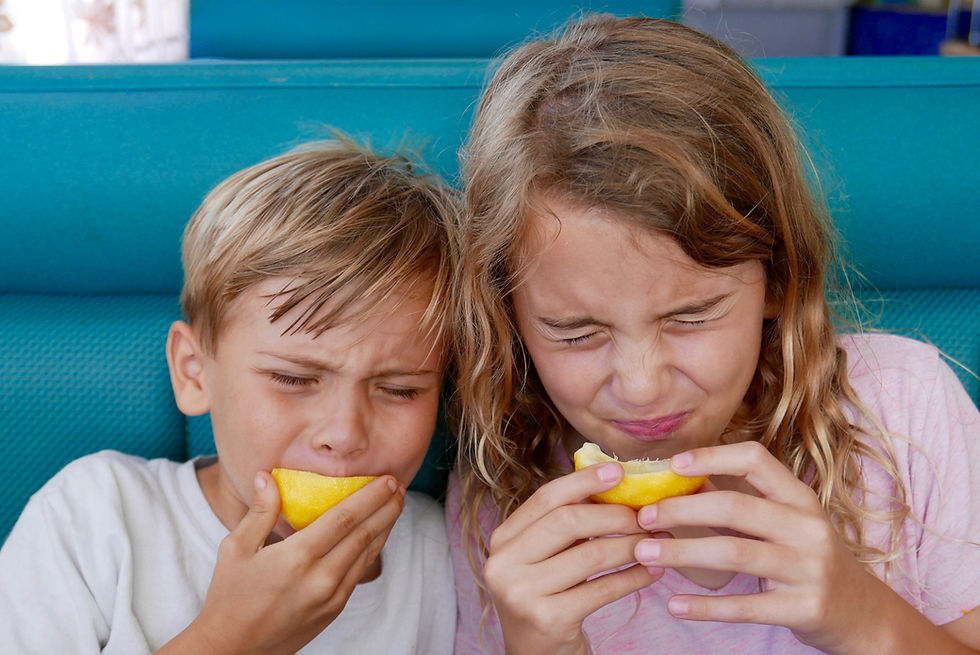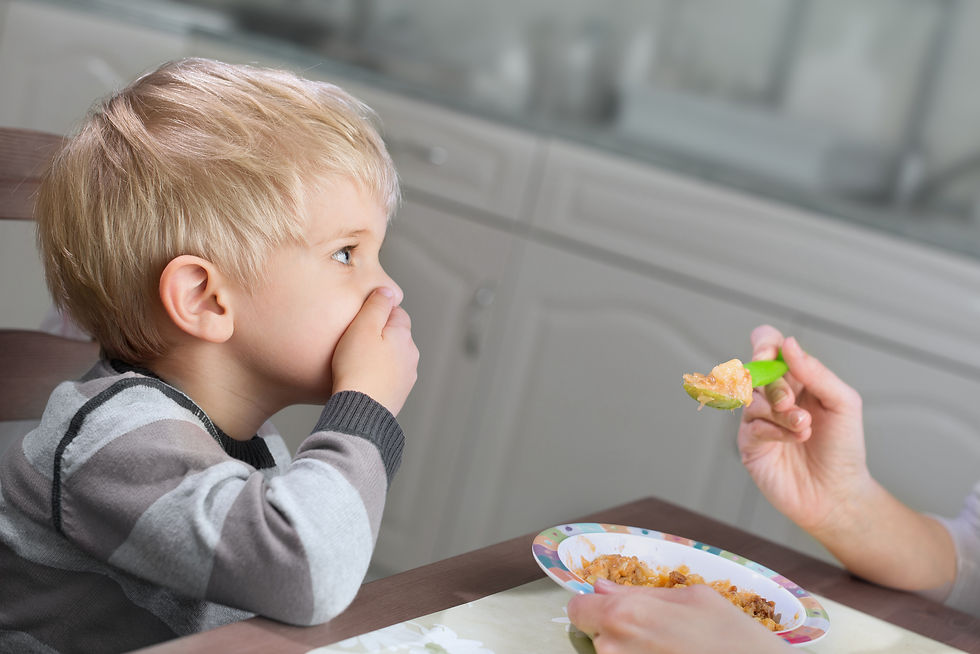The Gustatory Sensory System and Ideas You Can Do at Home
- Susan Donohoe

- Jun 26, 2020
- 3 min read
Updated: May 15
Simply Put, a recap; Sensory Integration or Sensory Processing is the neurological process that organizes sensory information received from one’s own body and the environment making it possible to interact and respond effectively. Sensory Processing is the relationship between the brain and behavior.

There are 9 sensory systems:
Visual/Eyes
Auditory/Sound
Tactile/Touch
Taste
Smell/Olfactory
Vestibular
Proprioceptive
Gustatory
Interoception
Our focus for these ideas will be the Gustatory Sensory System
Simply Put, the Gustatory Sensory System is the sense of taste. This is a complex system that starts with food entering the mouth where it comes into contact with the tongue. The little bumps that cover your tongue are called papilla. The papilla holds several taste buds which consist of tasting cells. These cells interact with chemical structures which activate nerve impulses sending signals to the brainstem, and then to the brain Gustatory Cortex. This system helps us discern between safe and hazardous foods. Sensory Taste is not the same as what we think of as “flavor”. Flavor is the blend of taste and smell (Olfactory and Gustatory) sensations evoked by a substance in the mouth as described. Therefore, it is important to understand that the sense of smell plays an important role to children who are sensitive to taste.
The proprioceptive sensory system (chewing pressure) and the tactile sensory system (texture) can also impact how a child deals with food. Different from the gustatory system, they can play an important role working together in how your child will deal with food. The sense of Taste is a basic sense and is encountered through the sensory organs described above. The five basic taste sensations are:
Sweet
Sour
Bitter
Salty
Savory
As mentioned with our previous Simply Put sensory system blogs, children who have difficulty processing Gustatory or Taste sensory information can exhibit hyposensitivity or hypersensitivity. They may demonstrate some of the following behaviors;

Hypersensitivity
Picky eater - extreme limited variety of foods
Fussy baby with extreme eating difficulties
Difficulty with food temperature (too hot or cold)
Difficulty with food textures
Gagging during meals
Difficulty maintaining weight
Difficulty with oral care, teeth brushing, going to the dentist
Extreme emotional reactions and agitation with food
Great difficulty with certain tastes
Hyposensitivity
Frequent Drooling
Seems unaware of spicy or hot food
May lick objects frequently
Frequent mouthing or chewing of non-edible objects; constant chewing of shirt collar, eating sand, chewing pencils, etc.
It is important to remember when assessing sensory processing that children can appear to have symptoms or characteristics of processing issues. It only becomes a disorder when the symptoms become severe enough to affect the normal activities of the child’s day and hamper everyday life.
*** When a child has serious difficulty with gustatory processing, please consider the guidance of an experienced Occupational Therapist that specializes in gustatory sensory dysfunction. Your child may need to participate in feeding therapy or require oral activities within a “sensory diet” https://www.sensorysmartparent.com/sensory-diet to carry out and be monitored.
Activity Suggestions for Home to Help Provide Valuable Input Through The Gustatory Sensory System
Oral activities which enhance the proprioceptive input can be very calming.
Sniff and describe the smell without using vision
Blowing up balloons
Blowing bubbles
Chewing gum
Suck on lollipops or popsicles
Draw with smelly markers
Drinking from a straw-especially thick liquids
Blowing a ping pong ball through a handmade maze
Blog a cotton ball through a straw and make it a race
Have your child help with baking for the smells and tastes
Vibrating toothbrush provides added proprioceptive input and may help calm
Practice whistling to songs, make everyone guess what song
Touch with tongue and describe the taste without vision. Make sure to use safe non-noxious tastes to enhance trust
Present foods in new ways including textures, temperature, etc. Your child may prefer a dried cherry to a fresh one because of the different texture
Using a straw, blog bubbles in the bath or in a sink. Watch them grow!
Playing with sensory bins can help introduce different textures, smells, etc.
Incorporate snacks during the day that are chewy or crunchy
** Again, always take note how activities affect your child. Look at what they can tolerate and change it they cannot.
With any activity suggestion, make it fun! Children register sensory experiences and learn best when they are having fun.
Products You May Like:



